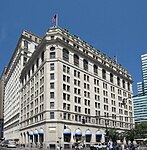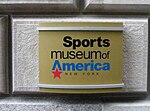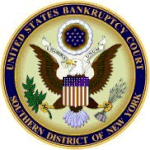Orthodox Union
Jewish organizations based in the United StatesJewish religious organizationsKosher food certification organizationsModern Orthodox Judaism in the United StatesRabbinical organizations ... and 1 more
Religious organizations established in 1898
The Orthodox Union (abbreviated OU) is one of the largest Orthodox Jewish organizations in the United States. Founded in 1898, the OU supports a network of synagogues, youth programs, Jewish and Religious Zionist advocacy programs, programs for the disabled, localized religious study programs, and international units with locations in Israel and formerly in Ukraine. The OU maintains a kosher certification service, whose circled-U hechsher symbol, Ⓤ, is found on the labels of many kosher commercial and consumer food products. Its synagogues and their rabbis typically identify themselves with Modern Orthodox Judaism.
Excerpt from the Wikipedia article Orthodox Union (License: CC BY-SA 3.0, Authors).Orthodox Union
Broadway, New York Manhattan
Geographical coordinates (GPS) Address Nearby Places Show on map
Geographical coordinates (GPS)
| Latitude | Longitude |
|---|---|
| N 40.705277777778 ° | E -74.014166666667 ° |
Address
Bowling Green Building
Broadway 11
10004 New York, Manhattan
New York, United States
Open on Google Maps









